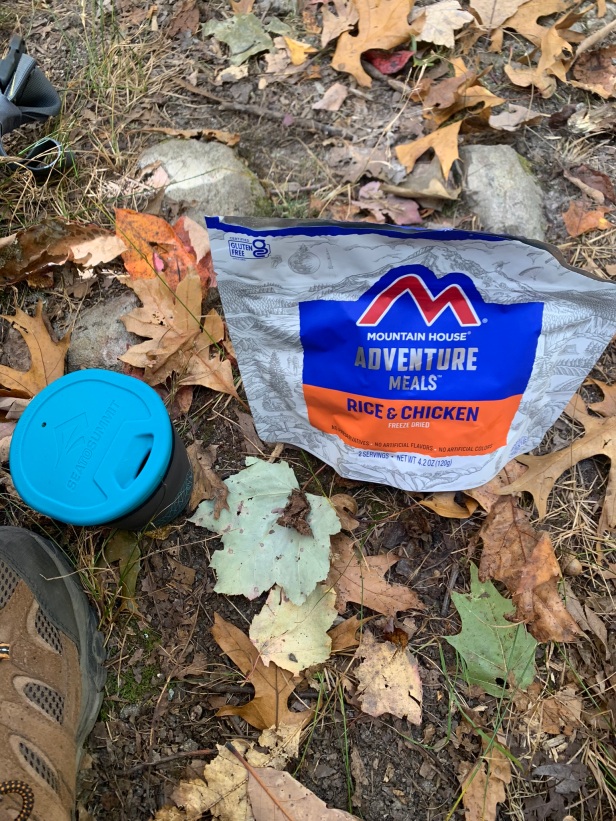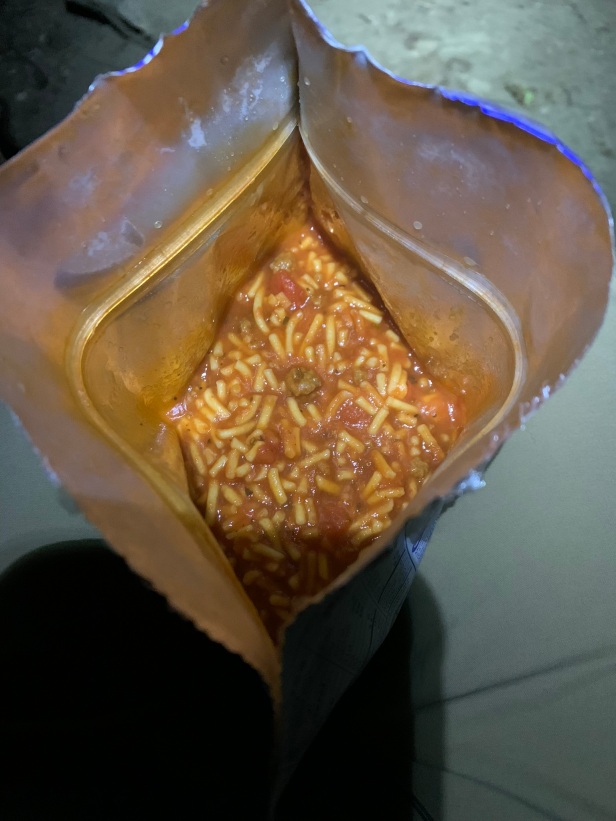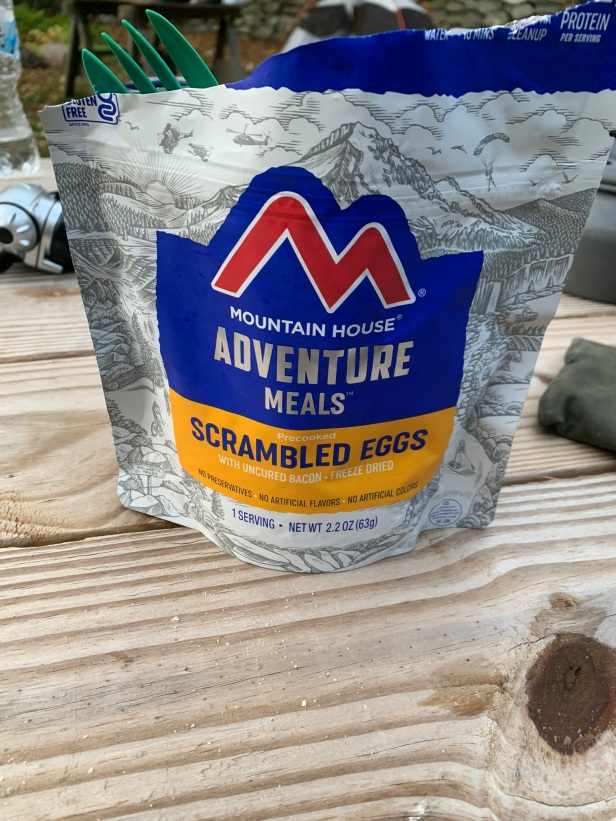Backpacking is hard work. Carrying a bunch of weight on your back for an entire day will burn tons of calories and you need to make sure you don’t fall behind and get too hungry. Snacking is one way to keep that energy going all day, but the big meals are where you can really pack in the calories. It also gives you an opportunity to rest and enjoy the views, talk to friends, and think about all you have accomplished so far. When we were prepping for our backpacking trip in late October, I thought long and hard about what I was going to do for meals. On one hand, I could just eat like I normally do. I could bring peanut butter and bread and keep it simple. On the other hand, I could buy some pre-made dehydrated meals and just add boiling water to get a nice hot meal to hit the spot. Ultimately I went with the ease of dehydrated meals since this was my first backpacking trip. Overall there were some major pros and cons that I wanted to discuss.

Impact:
Dehydrated meals often come in thick pouches that can contain boiling water and trap the heat in to rehydrate the food. What this ultimately means though is more waste that you have to carry with you and ultimately throw away in a landfill. I am by no means the best at reducing my impact on the Earth, but every little bit counts. For infrequent trips, this may not be a huge deal, but it still carries a negative impact. Especially when the point of going out into nature is to enjoy it and help preserve it for your kids, impact means something.
Cost:
Dehydrated meals can be expensive. I bought mostly double serving meals that cost about $10-13 each. This netted me about 600+ calories, but there are certainly more cost effective ways to get those calories. If you do go the dehydrated food route, try to get them in a sale. I was able to pick up 8 meals at REI for 10% off (plus I get 10% dividend back as a member) before the trip, and now I have some extra meals for my next adventure.
Ease:
While dehydrated meals are easy to throw in your pack and not have to deal with a bunch of ingredients, they do require boiling water and take at least 15 minutes to absorb all of the water once it is poured in. If you’re really hungry during your hike and looking forward to a hot meal, you’re going to have to wait a bit longer for water to boil and then for the meal to cook.
Taste:
All of the meals I bought were actually pretty good tasting. Some were much better and some were just okay, but none of the meals tasted bad. The joy of having a flavorful and hot dinner after hiking 13 miles the first day makes having at least one or two dehydrated meals worth it to me. I would have been sorely disappointed with a PB&J sandwich after all that hard work. Instead, I got to enjoy a delicious pasta with meat sauce dinner that tasted like something I might make at home. Breakfast time after a long night sleeping in a tent? Biscuits and gravy were A-OK with me. There’s just something about a nice hot meal enjoyed out in nature that makes it all worth it.

Variety:
There are plenty of brands and varieties of food that you can pick up, making it easy to get a little diversity in your hiking meals. I tried out 2 different brands (Backpacker’s Pantry and Mountain House) and they were both great. I enjoyed all of the different meals I had chosen and look forward to trying more in the future.

Overall Impressions:
For the short occasional solo backpacking trip, I would definitely bring a few dehydrated meals with me. I might mix it up and do just PB&J sandwiches for lunch and splurge on dinner, but having a few dehydrated meals just works great. If you are backpacking as a family (something I hope to do in the future), dehydrated meals become less and less practical from a cost and waste standpoint. In that instance, I might start looking for more bulk meals that could be prepared simply and still taste good.
What about you? How do you eat when you are out on the trail? Fill us and our readers in in the comments section!


Great post. I am another dad who likes gear, ha. My son (16) and I mix it up. For a single-night overnight hike, we might just do grocery store meals (e.g. mix some canned chicken in with a Knorr Spanish Rice and some spices). For longer treks (3-5 days) we do a mix of meals. I agree the freeze-dried meals can get pricey but when you’re packing that much food it can be a real weight and bulk-reducer. Back in June of 2021 we did 55 miles from a Tuesday evening to that Saturday afternoon, and I’d say we ate maybe 5-6 freeze-dried meals. The rest was things like ramen (enhanced with meat), trail mix, jerky, pop tarts, etc. Some other things we’ve discovered at the grocery store are pre-cooked bacon (heat the whole pack on a rock by the fire) and “7 Days Bakery” filled croissants!
LikeLike
Awesome tips! Thanks for sharing. The longer the trek, the more and more they make sense. I’m going to have to give your suggestions a try!
LikeLiked by 1 person